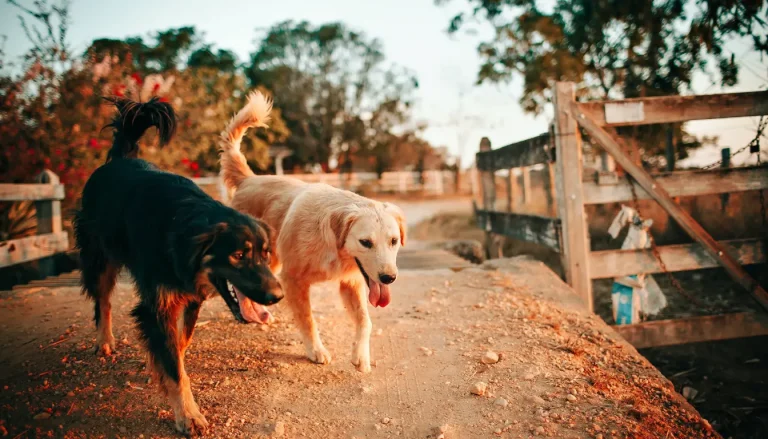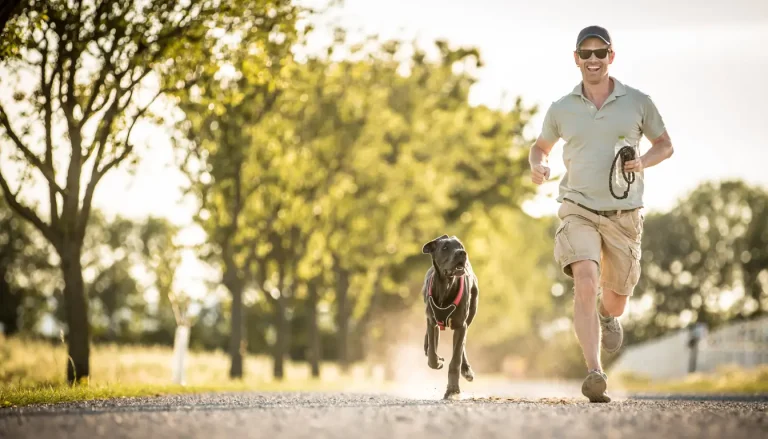Having a well-trained and obedient pet can transform your daily life, making it more enjoyable and stress-free. Whether you have a dog, cat, or another companion animal, investing time in training is essential for a harmonious household. In this article, we’ll explore the benefits of having a well-trained pet, basic and advanced training techniques, common challenges, and how to overcome them.
Imagine a life where your furry friend follows your every command, stays calm in any situation, and behaves impeccably whether at home or in public. Achieving this level of obedience might seem daunting, but it’s entirely possible with the right approach. A well-trained pet not only enhances your day-to-day experiences but also contributes significantly to your pet’s well-being and happiness.
Training your pet is more than just teaching them tricks; it’s about establishing a clear line of communication and building a relationship based on trust and respect. From preventing destructive behaviors to ensuring their safety, the benefits of having a well-trained and obedient pet are numerous. This guide will delve into various training techniques, address common challenges, and provide insights to help you and your pet succeed in your training journey.
Pets, like humans, thrive on structure and consistency. By setting clear boundaries and reinforcing positive behavior, you can create an environment where your pet feels secure and understood. Whether you are starting with a new puppy or kitten or looking to train an older pet, this guide offers valuable tips and strategies tailored to suit pets at any stage of life.
Join us as we explore the joys and rewards of having a well-trained and obedient pet. We will cover essential training methods, advanced techniques, and practical advice to help you navigate the training process with confidence and ease. By the end of this guide, you’ll have the knowledge and tools necessary to foster a loving, disciplined, and mutually respectful relationship with your pet.
Benefits of Having a Well-Trained Pet
Improved Safety
One of the primary benefits of having a well-trained pet is improved safety. A pet that responds to commands such as “sit,” “stay,” and “come” is less likely to engage in dangerous behaviors, reducing the risk of accidents and injuries. Training your pet to obey these commands ensures they remain safe in various environments, whether at home or in public spaces.
Enhanced Bond with Your Pet
Training sessions provide an excellent opportunity to strengthen the bond between you and your pet. Through consistent interaction and positive reinforcement, your pet learns to trust and respect you, leading to a deeper, more fulfilling relationship. An obedient pet is more likely to enjoy shared activities and follow your lead, enhancing your overall companionship.
Better Socialization
A well-trained pet is often better socialized and can interact more positively with other animals and people. Training helps your pet learn appropriate behaviors in different social settings, reducing the likelihood of aggression or fear-based reactions. This is particularly important for dogs, as socialization is crucial for their development and well-being.

Basic Training Techniques
Positive Reinforcement
Positive reinforcement is a powerful training technique that involves rewarding your pet for desired behaviors. This can include treats, praise, or playtime, reinforcing the behavior you want to see repeated. Positive reinforcement is not only effective but also fosters a happy and willing learner, making training sessions enjoyable for both you and your pet.
Example: Imagine you’re teaching your dog to sit. Every time your dog sits on command, you immediately give them a small treat and praise them with a cheerful “Good sit!” Over time, your dog will associate the act of sitting with positive rewards, making them more likely to obey the command in the future.
Consistency is Key
Consistency is crucial when training your pet. Establishing and maintaining clear and consistent rules helps your pet understand what is expected of them. This means using the same commands, rewards, and routines consistently, ensuring your pet receives the same message every time.
Example: If you’re training your cat to stay off the kitchen counters, you need to enforce this rule consistently. Every time your cat jumps on the counter, gently remove them and place them on the floor, saying “No counters” in a firm but calm voice. Over time, your cat will learn that the kitchen counters are off-limits, especially if everyone in the household follows the same procedure.
Use of Commands
Teaching your pet basic commands such as “sit,” “stay,” and “come” forms the foundation of obedience training. These commands are essential for managing your pet’s behavior and ensuring their safety. Practice these commands regularly in different environments to reinforce their importance and reliability.
Example: To teach your dog the “come” command, start in a quiet room with minimal distractions. Show your dog a treat, then take a few steps back and say “Come” in an enthusiastic tone. When your dog comes to you, reward them with the treat and praise. Practice this in various locations, gradually increasing the distance and level of distractions to ensure your dog responds reliably in all situations.
Common Training Challenges
Dealing with Stubborn Pets
Training a stubborn pet can be challenging, but it is not impossible. The key is to remain patient and persistent. Identify what motivates your pet, whether it’s treats, toys, or affection, and use that to encourage positive behavior. Remember, every pet learns at their own pace, so stay committed to the process.
Recognizing a stubborn pet it´s essential for effective training. Stubborn pets often display specific behaviors that indicate resistance to commands and training efforts. These behaviors include ignoring commands, showing disinterest in treats or rewards, and engaging in persistent undesirable actions despite repeated corrections.
How to Recognize a Stubborn Pet:
- Ignoring Commands: If your pet consistently ignores your commands or takes a long time to respond, it might be showing stubborn behavior.
- Lack of Interest: A pet that shows little to no interest in treats, toys, or praise during training sessions may be stubborn.
- Persistent Misbehavior: Engaging in unwanted behaviors such as chewing furniture, jumping on people, or barking incessantly despite corrections is a sign of stubbornness.
To address stubbornness, it’s important to remain patient and persistent. Use high-value rewards that your pet finds irresistible, and keep training sessions short and engaging. Remember, consistency is key. Reinforce commands regularly and celebrate small victories to encourage progress.
Addressing Fear and Anxiety
Some pets may exhibit fear or anxiety, making training more difficult. It’s important to create a safe and calm training environment, using gentle and reassuring methods. Gradually expose your pet to new experiences and environments, helping them build confidence over time.
Recognizing signs of fear and anxiety in pets is crucial for effective training. Fearful or anxious pets often exhibit specific behaviors that signal their discomfort or stress.
How to Identify Signs of Fear and Anxiety:
- Body Language: Look for signs such as tucked tails, flattened ears, cowering, or trying to hide.
- Vocalization: Whining, whimpering, or excessive barking can indicate fear or anxiety.
- Physical Symptoms: Trembling, excessive panting, drooling, or avoiding eye contact are common signs of anxiety.
- Behavioral Changes: Sudden aggression, destructiveness, or withdrawal from interaction can be indicators of fear or anxiety.
To address fear and anxiety, create a safe and calm training environment. Use gentle and reassuring methods, and gradually expose your pet to new experiences and environments to build their confidence. Positive reinforcement and patience are crucial in helping your pet overcome fear and anxiety.
Patience and Persistence
Training takes time, and it’s important to be patient and persistent. Celebrate small victories and understand that setbacks are part of the learning process. By remaining calm and consistent, your pet will eventually understand and respond to your commands.
Demonstrating patience and love to your pet during training is essential for building a strong, trusting relationship. Pets, like humans, respond positively to patience and understanding, which fosters a supportive learning environment.
How to Show Patience and Love:
- Calm Demeanor: Maintain a calm and relaxed demeanor during training sessions. Your pet will sense your calmness and feel more secure.
- Gentle Reinforcement: Use gentle and encouraging words, even if your pet makes mistakes. Avoid yelling or harsh corrections, as these can cause fear and anxiety.
- Regular Breaks: Give your pet regular breaks during training to prevent them from becoming overwhelmed or frustrated. Short, frequent sessions are more effective than long, tiring ones.
- Consistent Praise: Celebrate small successes with treats, praise, and affection. Consistent positive reinforcement helps your pet understand what behaviors are desirable.
By showing patience and love, you create a positive training atmosphere that encourages your pet to learn and grow. This approach not only improves obedience but also strengthens the bond between you and your pet.
Advanced Training Techniques
Clicker Training
Clicker training is an advanced technique that uses a clicking sound to mark desired behaviors, followed by a reward. This method is highly effective for precise training and can be used to teach complex commands and tricks. Clicker training enhances communication between you and your pet, making training sessions more efficient and enjoyable.
Example of Clicker Training:
Imagine you want to teach your dog to lie down on command. Here’s a step-by-step guide using a clicker:
- Choose the Right Clicker: Purchase a clicker that is easy to hold and produces a consistent, clear sound. Many pet stores offer a variety of clickers, but one with a comfortable grip and a moderate sound level, like the i-Click Clicker, is a great choice for beginners.
- Introduce the Clicker: Start by “charging” the clicker, which means associating the click sound with a treat. Click the clicker and immediately give your dog a treat. Repeat this several times until your dog looks for a treat upon hearing the click.
- Command Introduction: Hold a treat close to your dog’s nose and slowly move it down to the ground. As your dog follows the treat, its body will naturally lower. As soon as your dog’s elbows touch the ground, click and reward with a treat.
- Repetition and Association: Repeat the process several times. Once your dog starts to understand the action, introduce the verbal command “lie down” just before you move the treat. When your dog lies down, click and treat.
- Practice and Reinforce: Practice the command in various environments and gradually increase the duration your dog stays in the lying down position before clicking and treating. This reinforces the behavior and builds consistency.
Recommendation on Clickers:
For effective clicker training, it’s essential to choose a clicker that suits your training style and your pet’s needs. Here are a few recommendations:
- i-Click Clicker: This clicker is popular due to its ergonomic design, ease of use, and reliable sound. It’s ideal for beginners and experienced trainers alike.
- Starmark Pro-Training Clicker: Known for its durability and comfort, this clicker provides a crisp, clear sound that pets respond well to.
- PetSafe Clik-R Trainer: This clicker comes with a finger strap, making it easy to hold during training sessions, and produces a consistent sound that is neither too loud nor too soft.
When choosing a clicker, consider factors like sound level, ease of use, and comfort. A good clicker should produce a distinct sound that your pet can easily distinguish and respond to, facilitating a smooth and effective training process.
Off-Leash Training
Off-leash training is a valuable skill that allows your pet to enjoy more freedom while still obeying your commands. Start with basic commands and gradually practice in controlled environments before moving to more open spaces. Ensure your pet reliably responds to commands before allowing off-leash freedom.
Example of Off-Leash Training: Training your dog to stay close and come back when called is essential for successful off-leash experiences. Here’s a step-by-step guide:
- Start in a Controlled Environment: Begin training in a secure, enclosed area where your dog cannot run away. This could be a fenced backyard or a quiet park with minimal distractions.
- Strengthen Basic Commands: Before attempting off-leash training, ensure your dog has a solid understanding of basic commands such as “come,” “stay,” and “heel.” Use a long leash to practice these commands, allowing your dog to roam while still being under your control.
- Use Positive Reinforcement: Reward your dog with treats, praise, and playtime whenever they obey your commands. Positive reinforcement encourages your dog to repeat the desired behavior.
- Gradual Freedom: Gradually increase the length of the leash, giving your dog more freedom while still being able to correct them if they start to run off. Practice calling your dog back to you and rewarding them for returning promptly.
- Introduce Off-Leash Gradually: Once your dog reliably responds to commands on a long leash, you can begin off-leash training. Start in a secure area and practice calling your dog back to you frequently, rewarding them each time they respond correctly.

What to Do If Your Dog Runs Off:
If your dog tends to run off whenever you let them off the leash, here are some strategies to correct this behavior:
- Reinforce the Recall Command: Make the recall command (“come” or “here”) the most rewarding and positive experience for your dog. Use high-value treats that your dog loves and only use them for recall training. Practice this command regularly in different environments and gradually increase the level of distractions.
- Use a Long Line: Attach a long line (30-50 feet) to your dog’s collar and let them explore while you hold the end. This allows your dog to feel some freedom while still giving you control. If they try to run off, gently reel them back in and reward them for returning.
- Practice “Stop” and “Stay” Commands: Teach your dog the “stop” and “stay” commands, which can be life-saving in situations where they start to run off. Begin in a controlled environment and gradually introduce more distractions as your dog becomes more reliable with these commands.
- Play Recall Games: Make recall training fun by incorporating games. For example, hide and seek is an excellent way to practice recall. Hide in different locations and call your dog to find you, rewarding them when they do.
- Never Chase Your Dog: If your dog runs off, resist the urge to chase them, as this can turn into a game and reinforce the behavior. Instead, call them enthusiastically or run in the opposite direction to encourage them to follow you.
- Consistent Training: Consistency is crucial. Practice recall commands daily and maintain a positive and encouraging tone. Your dog will learn that coming back to you is always a rewarding experience.
By following these steps and remaining patient, you can teach your dog to enjoy off-leash freedom safely and responsibly. Remember, off-leash training takes time and persistence, but the reward of having a well-trained and obedient pet is well worth the effort.
Agility Training
Agility training involves teaching your pet to navigate an obstacle course, which can be both physically and mentally stimulating. This type of training is great for high-energy pets and helps improve their coordination, confidence, and overall fitness. Agility training also strengthens the bond between you and your pet through teamwork and mutual trust.
Remember…
A well-trained and obedient pet brings numerous benefits, from improved safety and enhanced bonds to better socialization and enriched lives. Whether you’re focusing on basic commands or advanced training techniques, the key to success lies in consistency, positive reinforcement, and patience. By investing time and effort into training, you can enjoy a harmonious and rewarding relationship with your pet, making every moment together more enjoyable.
For more tips and information on keeping your pets happy and well-trained, visit our blog.


